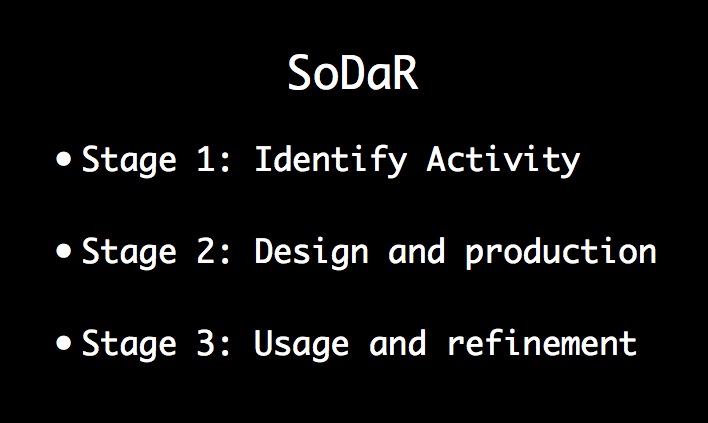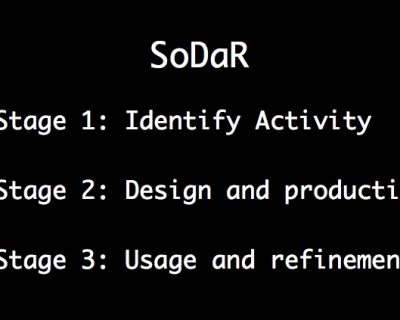SoDaR is an approach to research that involves software development as an active research method in the humanities. This theory describes how software development can be used as a method for research in the arts and design fields in particular. It explains how software development can be used to externalize emerging ideas, how such externalization can aid research by allowing reflection, how it stimulates acting upon theories, and provides evidence about the validity of theories in practice that involves new software-based experiences. There are parallels with interactive software development process and established research methods such as action research, case study, and activity theory. The SoDaR approach features three stages; Identifying Activities to Improve, Design and Production of technologies to assist, Usage and Refinement of these through iterative feedback with users.

The application of the SoDaR approach to music education research was outlined in a paper published in the International Journal of Education & the Arts. The abstract of that paper reads:
This paper discusses how software development can be used as a method for music education research. It explains how software development can externalize ideas, stimulate action and reflection, and provide evidence to support the educative value of new software-based experiences. Parallels between the interactive software development process and established research methods are drawn, with particular focus on action research, case study, and activity theory. A new approach to arts educational research called Software Development as Research (SoDaR) is proposed. The paper includes examples from the author’s use of this approach when developing the jam2jam software to facilitate networked music improvisation experiences for young children.
Brown, Andrew R. 2007. “Software Development as Music Education Research.” International Journal of Education & the Arts 8 (6).

